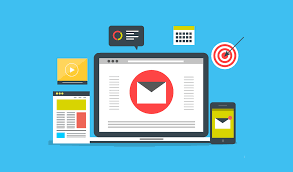
Tracking Email Conversions: Turning Data into Actionable Strategies
The ability to analyze email is an effective tool for optimizing email marketing campaigns. It provides important insight into how people respond to your emails. Knowing these metrics can greatly enhance your strategies, increase levels of engagement and ultimately improve the performance of your company.
1. Open Rate
One of the primary metrics in email analytics includes the number of open rates, which reflects the percentage of recipients who have opened your email in relation to the total amount of emails delivered. An open rate that is high suggests that the message’s subject line and preview text are appealing, however it’s important to remember that this measure alone does not ensure engagement. Factors such as email clients’ settings and spam filtering and even timing are a factor.
2. Click-Through Rate (CTR)
The click-through percentage measures the proportion of recipients who have clicked hyperlinks within your email. This is a crucial metric to determine the effectiveness of your call-to-action (CTA) and the general relevance the content. A high CTR signifies that your email contents resonate with your readers and inspires users to take actions.
3. Conversion Rate
Conversion rate goes a step further, by calculating the percentage of recipients who completed a desired action after having read your email, such as making a purchase or registering for webinars. This is a crucial metric for evaluating the ROI for your email campaigns and understanding how well your email generates tangible results.
4. Bounce Rate
The bounce rate represents the percentage of emails that weren’t delivered successfully to recipients’ inboxes. There are two types of bounces: hard and soft. Soft bounces are issues that last for a short time like a full inbox or server problems and hard bounces are permanent such as incorrect email addresses. Monitoring bounce rates helps maintain an organized email list and increase the speed of delivery.
5. Unsubscribe Rate
This metric indicates the percentage of people who have opted out of receiving further emails. A high unsubscribe rate may suggest that your content is not in line with the expectations of your audience or that your frequency is excessive. Regularly analyzing this rate helps refine your content strategy and maintain a positive relationship with your customers.
6. Engagement Over Time
Analyzing the way engagement metrics change over time can reveal trends and patterns within your audience. For example, monitoring how open rates and CTRs evolve after different kinds of campaigns and seasonal promotions can help you determine what works best and adjust your strategies accordingly.
7. A/B Testing
A/B or split testing, is the process of sending various versions of an email to segments of your audience to determine which is more effective. By comparing metrics like the rate of open, CTR, and conversions over different versions, you can refine your strategy and improve the effectiveness of your overall campaign.
In sum, email analytics provides a abundance of data that can drive more efficient email marketing strategies. By focusing on important metrics such as open rate and click-through rates, conversion rates, bounce rates, and unsubscribe rates, and using A/B testing, you can make decision-based decisions that improve engagement and achieve your marketing objectives.